Ferdinand Hodler – The Painter Who Revolutionized Swiss Art
Ferdinand Hodler was one of the principal figures of 19th-century Swiss painting. Hodler worked in many styles during his life. Over the course of...
Louisa Mahoney 25 July 2024
José Ferraz de Almeida Júnior (1850–1899) was a popular Brazilian artist from the late 19th century. His commendable paintings paved the transition from traditional art to modernism in Brazil. So significant were his contributions to the Brazilian art industry that his birthday, May 8th, is commemorated as the Dia do Artista Plástico or the Day of Fine Arts in Brazil’s art circles.
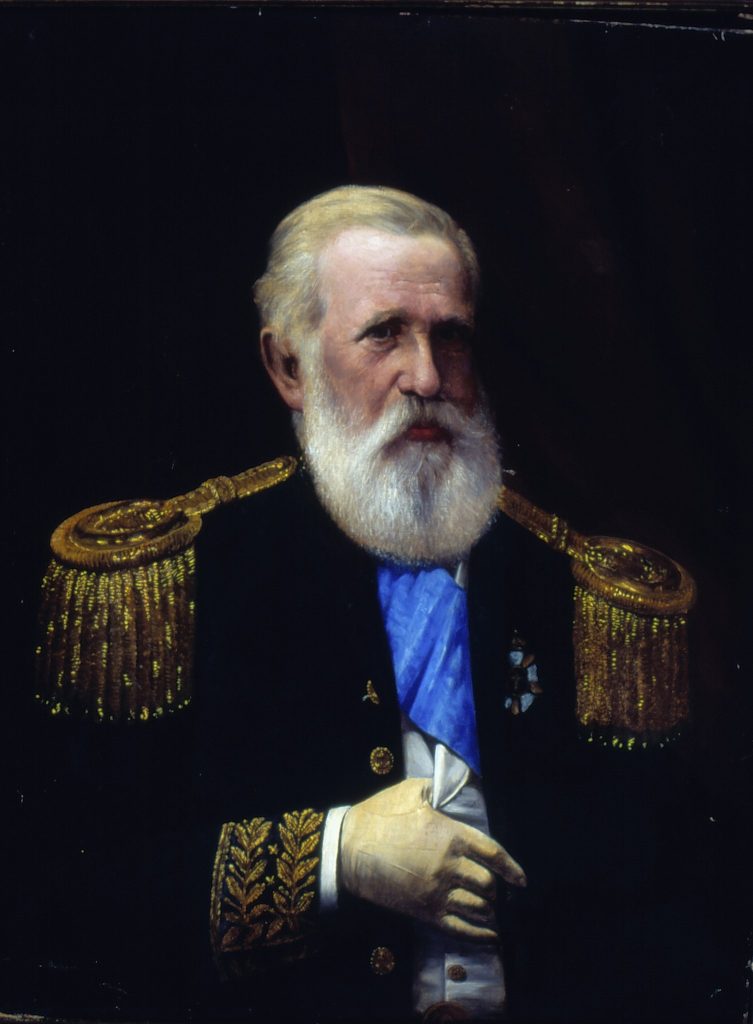
José Ferraz de Almeida Júnior, Portrait of Dom Pedro II (Retrato de Dom Pedro II), ca. 1889, Museu Paulista, São Paulo, Brazil. Wikimedia Commons (public domain).
José Ferraz de Almeida Júnior was born on May 8, 1850, in Itu, a historic municipality in rural São Paulo in the former Empire of Brazil. He had a humble and fairly conservative religious upbringing and his father was a village priest. He worked as a bell-ringer at the church where his father preached and spent his free time creating portraits and religious imagery.
After an early demonstration of talent and the promise of a prestigious future in art, his church raised funds from the community to send Almeida Júnior to Rio de Janeiro for formal training at the Academia Imperial de Belas Artes (Imperial Academy).
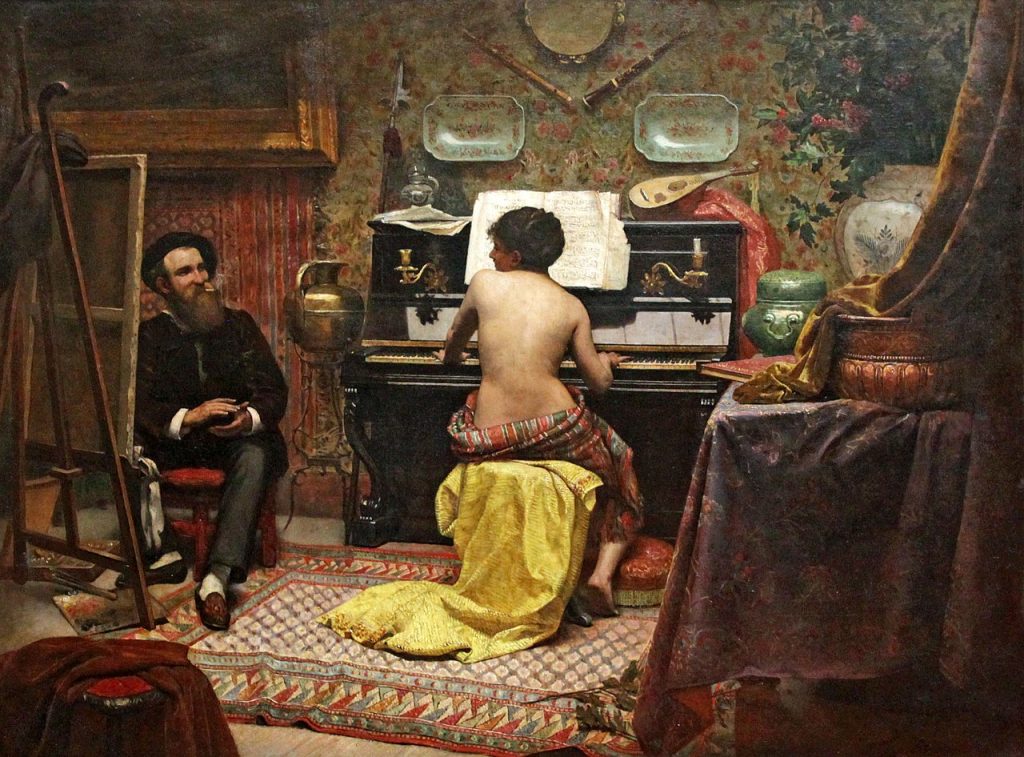
José Ferraz de Almeida Júnior, The Model’s Rest (Descanso do modelo), ca. 1882, Museu Nacional de Belas Artes, Rio de Janeiro, Brazil. Wikimedia Commons (public domain).
Almeida Júnior was a gifted and popular student at the Imperial Academy. It is believed that he retained his simple country mannerisms and speech, which made him stand out amongst his urban peers. Upon the completion of his formal training, he returned to Itu and established an art studio there.
In a fortuitous turn of events, his paintings caught the attention of Emperor Pedro II who happened to be touring the region in 1876. The emperor was so impressed by the young artist that he offered him a generous stipend to pursue art training in France.
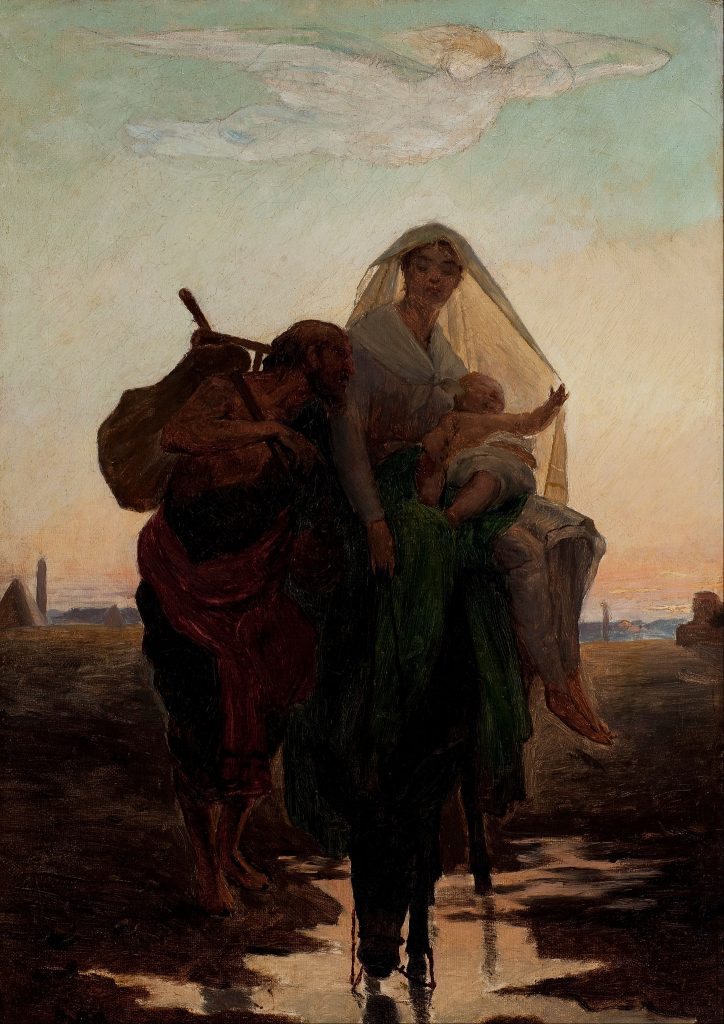
José Ferraz de Almeida Júnior, Study for Flight of the Holy Family to Egypt, ca. 1891, Pinacoteca do Estado de São Paulo, São Paulo, Brazil. Wikimedia Commons (public domain).
Soon after crossing paths with Emperor Pedro, Almeida Júnior traveled to Paris and settled in the neighborhood of Montmartre. He enrolled at the prestigious École des Beaux-Arts and became a student of Alexandre Cabanel. He spent three years engaged in anatomical drawing instruction. His skills were recognized in the art circles in Paris, and he participated in the esteemed Paris Salon four times. After a visit to Italy, Almeida Júnior returned to Brazil around 1882 to exhibit the works from his first European period.
Almeida Júnior made three more trips to Europe from 1887 to 1896 where he met with many European painters and artists that left a lasting impression on his aesthetic.
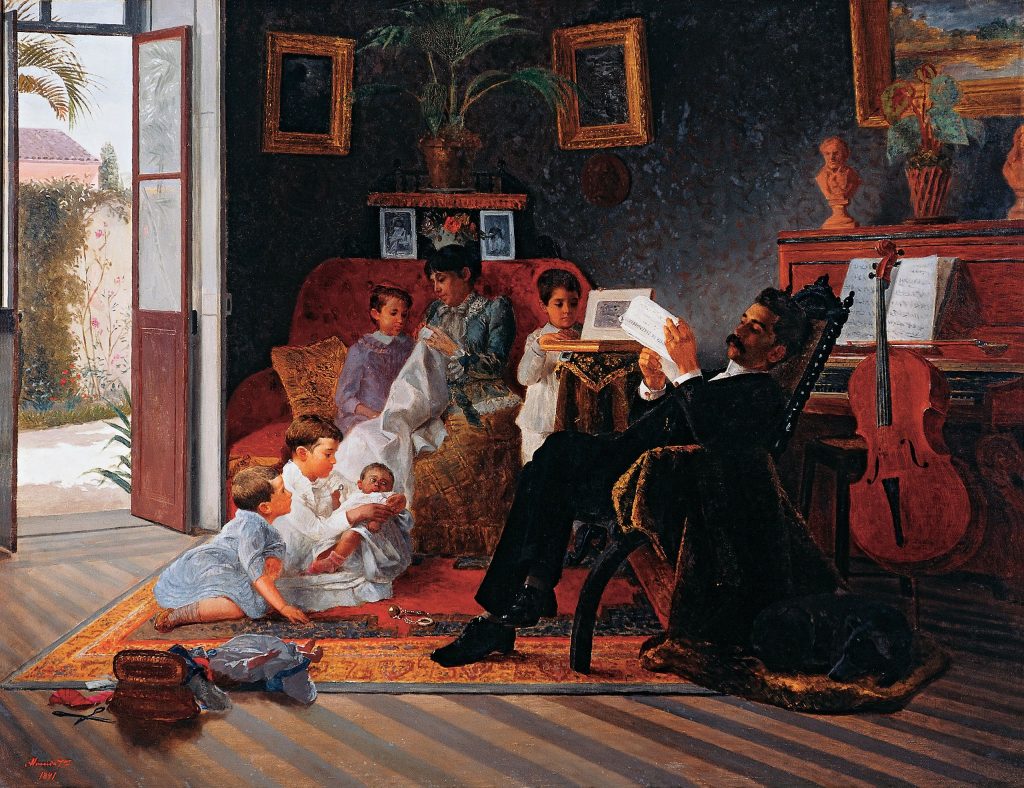
José Ferraz de Almeida Júnior, Scene of Adolfo Pinto’s Family, ca. 1891, Pinacoteca do Estado de São Paulo, São Paulo, Brazil. Wikimedia Commons (public domain).
In 1883, Almeida Júnior established a studio in São Paulo. His impact on Brazilian art was not limited to his own work, but also included artistic training that he imparted to future generations of Brazilian artists. Although he was offered a prestigious teaching position at his alma mater at the Imperial Academy as a professor of historical painting, he declined the post in favor of the private art instruction he offered in his studio.
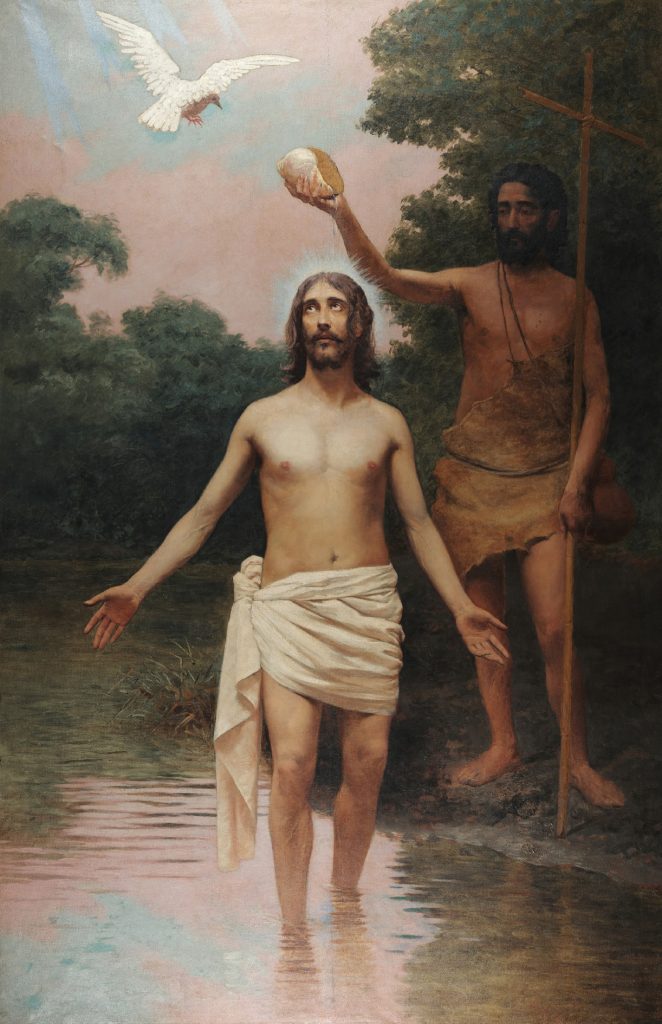
José Ferraz de Almeida Júnior, The Baptism of Christ, ca. 1895. Pinacoteca do Estado de São Paulo, São Paulo, Brazil. Wikimedia Commons (public domain).
Almeida Júnior’s most recognized works include religious and historical paintings. He was also a prolific portraitist who fulfilled a broad range of commissions for the elite of Brazilian society. His portraitures and depictions of figures were meticulous and demonstrated his great expertise in the portrayal of intense emotions, particularly the emotions of longing and despair.
Despite his considerable success in religious and historical themes, Almeida Júnior moved away from these subjects to adopt more regionalist themes. The work from his later years evidences the influence of Naturalism that deviated from the rigid academic paintings of his time to more realistic portrayals.
His oeuvre was expanded significantly with the tasteful and vibrant portrayals of caipiras, the inhabitants of rural or remote areas in south-central Brazil. These paintings projected the emotional simplicity of rural life that was perhaps deeply intrinsic to his rural roots.
The shifting thematic changes, although drastic in nature, did not diminish Almeida Júnior’s eminence in the world of Brazilian art. Rather, his skills and the evolution of his work were both recognized and appreciated through his evolution. He continued to flourish both as an artist and as a teacher of art instruction throughout his life.
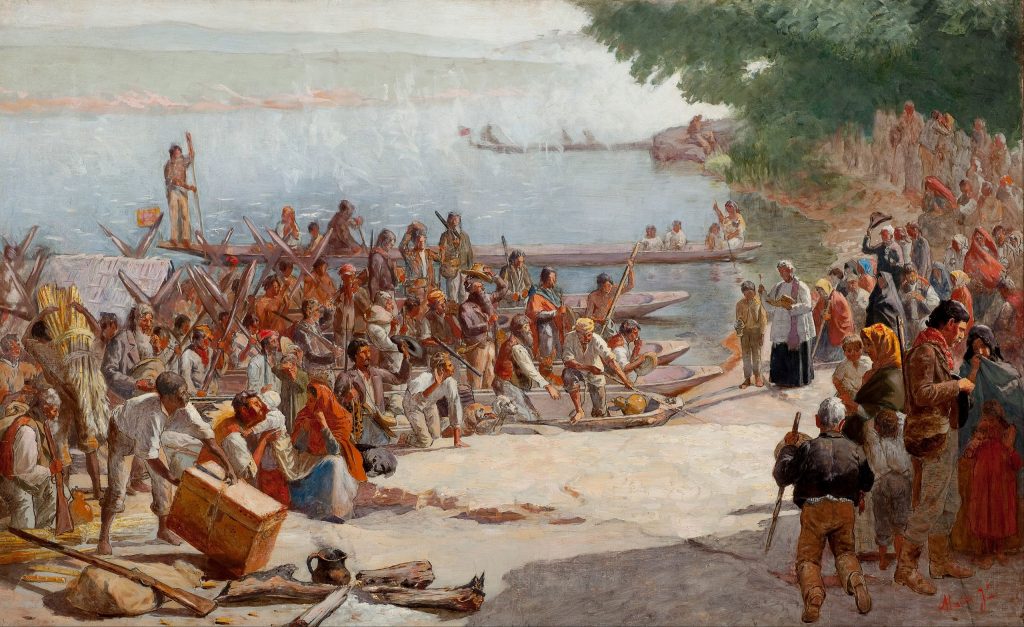
José Ferraz de Almeida Júnior, Study for Departure of the Monção, ca. 1897. Pinacoteca do Estado de São Paulo, São Paulo, Brazil. Wikimedia Commons (public domain).
While at the height of commercial and artistic success, Almeida Júnior’s personal life was afflicted with drama that resulted in his untimely demise.
For a brief period, Almeida Júnior was engaged to a young lady by the name of Maria Laura. However, the engagement was broken off and Maria Laura married his cousin, José de Almeida Sampaio. The pair, however, continued a long illicit affair after her marriage and Sampaio eventually found out.
On November 13, 1899, Sampaio encountered his artist cousin in front of the Hotel Central in the city of Piracicaba and stabbed him in a fit of rage. The artist succumbed to his injuries, bringing an end to an illustrious career.
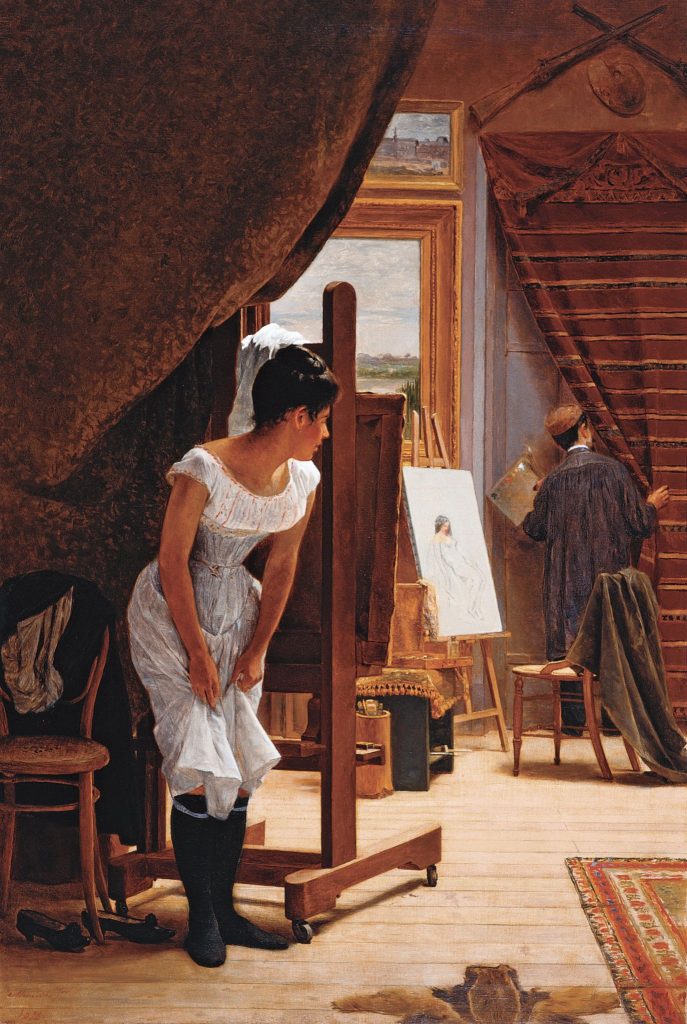
José Ferraz de Almeida Júnior, The Inopportune, ca. 1898. Pinacoteca do Estado de São Paulo, São Paulo, Brazil. Wikimedia Commons (public domain).
Over the years, Almeida Júnior received several accolades from the Imperial Academy and was recognized as one of the early painters of realistic portraiture. He laid the very foundation of modern art in Brazil. His illustrious career expanded following many exhibitions in São Paulo that boosted his career and reputation far and wide.
In 1884, he had a particularly successful exhibition at the Exposição Geral de Belas Artes (General Exhibition of the Fine Arts). Following the success of this exhibition, he was accorded knighthood under the Imperial Order of the Rose, an honor awarded to civilians and military personnel, either Brazilians or foreigners, who distinguished themselves by their fidelity to the Emperor and by services rendered to the state.
DailyArt Magazine needs your support. Every contribution, however big or small, is very valuable for our future. Thanks to it, we will be able to sustain and grow the Magazine. Thank you for your help!